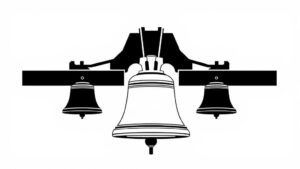Mining Old Glassblowing Studio Plans for Early Industrial Tools
Mining Old Glassblowing Studio Plans for Early Industrial Tools
The study of early industrial tools reveals much about the technological advancements and socio-economic structures of the periods in which they were developed. One often-overlooked resource in this domain is the old glassblowing studios. These facilities not only produced glass art but also served as innovative hubs where tools and processes were developed that influenced industrial practices. This article examines the plans and documentation from historical glassblowing studios to uncover their contributions to early industrial tool manufacturing.
The Historical Significance of Glassblowing Studios
Glassblowing originated in the Roman Empire around the first century BCE and evolved through the Middle Ages, particularly flourishing in Venice and later in places like England and America. Locations such as the Pilchuck Glass School in Washington State, established in the 1970s, embody the modern revival of glassblowing, but it is the earlier studios that hold the key to understanding industrial advancements. For example, the Murano glassmakers of Italy not only created sophisticated glass objects but also crafted specialized tools required for glass formation and manipulation, some of which were adapted for other industries.
Historical Documentation and Artifact Analysis
To investigate the impact of glassblowing studios on early industrial tools, we can examine historical documentation, including plans and inventory lists. Records from the 17th to the 19th centuries provide insights into the types of tools produced and their functionality. For example, the glassblowing tools such as blowpipes, punty rods, and jacks were not solely for glass production; similar designs found their way into other industries, such as metalworking and ceramics. The designs often reflected the technological adaptations prevalent in industrial practices of the time.
- Blowpipes: Essential for shaping glass, these tools influenced the design of pipes in metallurgy.
- Punty rods: Used for transferring pieces, these rods served a similar purpose in ceramics.
- Jacks: Employed to manipulate hot glass, the mechanisms behind jacks informed the creation of tools in various manufacturing sectors.
Case Study: The Cambridge Glassworks
The Cambridge Glassworks, established in 1814 in Massachusetts, serves as a pertinent case study. Records indicate that the glassblowers developed several specialized tools that became standardized in industrial practices. An inventory from 1820 reveals tools such as blow molds and cutting tools that were later adapted for use in metal casting and plastic molding industries. This transition illustrates a vital aspect of industrial evolution, where tools are modified and repurposed across different sectors, driving innovation.
Technological Innovations in Tool Production
The glassblowing process necessitated precision and innovation. birth of mechanized glassblowing in the 19th century, with patents such as those filed by Michael Owens in 1903, revolutionized not only glass production but also introduced assembly line methods that would later permeate other industries. The adaptation of glassblowing tools for mechanical use contributed to the industrial eras increasing reliance on machinery, as outlined by historian David Landes in The Unbound Prometheus.
Conclusion and Future Implications
This exploration into the intersection of glassblowing studios and early industrial tools reveals a rich historical tapestry that informs technologys evolution. By analyzing plans and artifacts from these studios, researchers can gain insights into the adaptability and transfer of technology between industries. Understanding these connections highlights the relevance of artisanal practices in shaping modern manufacturing processes, illustrating that innovation often arises at the confluence of art and industry.
Future research could focus on digitizing and cataloging glassblowing plans, encouraging a deeper examination of material culture and technological history. Also, interdisciplinary collaborations between historians, industrialists, and artists could yield new approaches to understanding modern tools derived from historical practices.
Actionable Takeaways
- Archival research on historical glassblowing drafts and inventories can uncover lost tool designs relevant to modern manufacturing.
- Encouraging partnerships between glass artists and industrial engineers could inspire innovative tool design.
- A greater emphasis on the importance of artisanal techniques in industrial processes can lead to advancements in materials science.

